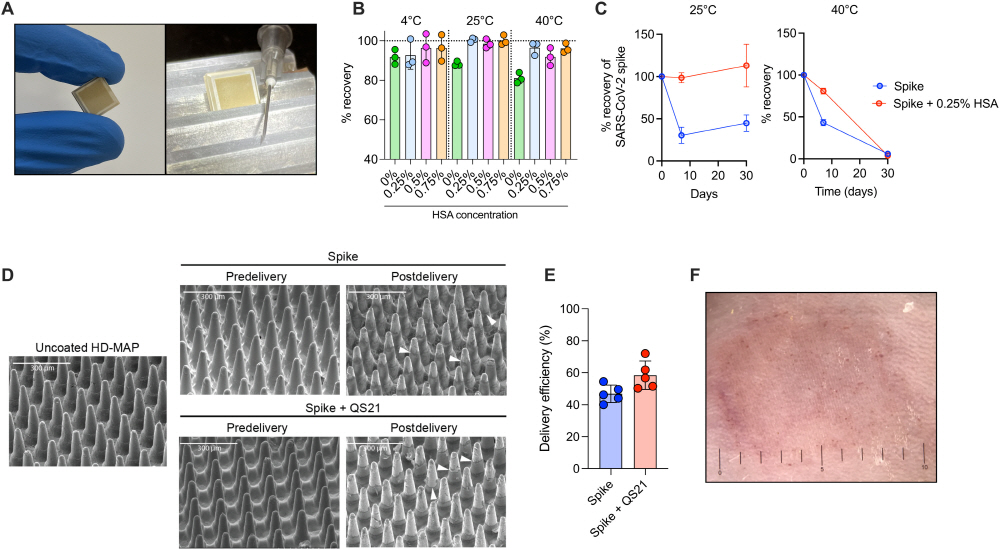
As the COVID-19 outbreak rages on, the development of a vaccine method that does not cause pain in patients is being developed. This time, an Australian research team reported that they had completed an experiment on mice with a vaccine patch that puts the vaccine on the skin and delivers the vaccine into the body.
The vaccine patch used by the University of Queensland research team was developed by Vaxxas. 5,000 protrusions 250 micrometers in length are laid on the front surface of the 1cm square patch. The vaccine applied to the surface is sent into the body by attaching a patch to the skin.
The research team said that when a control experiment using this patch and a syringe was administered to mice, the patch was more effective than the syringe for the amount of neutralizing antibody produced. In response, the research team believes that the reason is that the muscle tissue to which the general COVID-19 vaccine is inoculated does not contain many immune cells that respond to drugs. said it could

The research team pointed out that the patch used this time has advantages in terms of logistics. Moderna and Pfizer vaccines are stable at room temperature for several hours, but this patch is stable at 40 degrees for a week and at 25 degrees for at least 30 days. This will be a great advantage for developing countries that do not have storage facilities. Related information can be found here.

